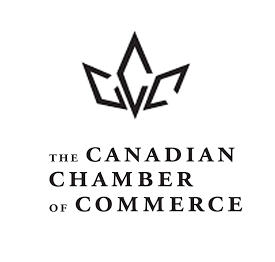
We collect basic website visitor information on this website and store it in cookies. We also utilize Google Analytics to track page view information to assist us in improving our website.
Tariffs and Trade Updates and Information, visit www.chambercheck.ca
|
|
||
|
Despite progress in gender equality and growing awareness of women’s contributions to the economy, women continue to be underrepresented in entrepreneurship in Canada.
Sadly, this comes at a time when entrepreneurship itself - always a driving force for innovation, job creation and economic growth - is also declining and continues to suffer post-pandemic. In fact, BDC (Business Development Bank of Canada) has noted half as many people are opening businesses now compared with 20 years ago.
The impact of these issues is explored in a recent Canadian Chamber of Commerce report entitled Women Entrepreneurs: Canada’s Biggest Missed Business Opportunity, a follow up to a report the national business organization’s Business Data Lab released last year entitled Barely Breaking Ground: The Slow Stride of Progress for Women in Business Leadership and Entrepreneurship.
Both reports outline the ‘glacial’ progress of women-owned ventures, despite years of investment.
“I don’t think it’s something that can be resolved by one party or one piece of the ecosystem,” says Marwa Abdou, Senior Research Director at the Canadian Chamber of Commerce, who authored the Women Entrepreneurs report. “I think it needs an all-hands-on deck approach.”
Among its many surprising findings, this latest report found that women-owned businesses have not accounted for more than 20% of all enterprises since 2005 and that approximately 710,000 majority women-owned businesses are ‘missing’ (meaning people who could be involved in entrepreneurship but are not). Also, nearly two-thirds of these ‘missing’ women-owned businesses in Canada are in Ontario and Quebec.
Limited access to capital
One of the most significant barriers for women entrepreneurs in Canada remains limited access to capital. Studies consistently show that women are less likely to receive funding from investors and banks. This can be due to several reasons, including unconscious bias in lending practices, lack of networks connecting women to investors, and fewer women in investment decision-making roles.
“They deal with, comparatively and relatively speaking, more barriers to entry, particularly in a male dominated sector. They have less access to funding and are mentored less and have less training,” says Marwa. “All of that is also mirrored in their trajectory in the business landscape. When you then add on top of it an entrepreneurship environment where it is much more difficult and much riskier to be an entrepreneur, generally that means that the very barriers that women have faced for decades have now become exponentially worse.”
Successful entrepreneurship often relies on access to networks, mentors, and business communities. Unfortunately, women are underrepresented in these areas. Networking events, accelerator programs, and industry associations may not always feel welcoming or inclusive to women, especially those from racialized or Indigenous backgrounds.
Lack of mentors
Marwa notes in a recent podcast she hosts called Canada’s Economy Explained, her guest Isabelle Hudon, President and CEO of the Business Development Bank of Canada (BDC), discussed the economic gap of fewer women entrepreneurs and the pieces surrounding this issue.
“One of the things that she (Isabelle) talks about is even something as simple as when you think about women coming in and bringing in an entrepreneurial idea; they're coming into a boardroom full of white men who are somewhere in the middle, or not engaged,” says Marwa. “They're not going to see things from their perspective. They're not connected to the markets that they're connected to. They don't have the same lens on these issues.”
Without mentors who understand the unique challenges faced by women entrepreneurs, it can be difficult to navigate business growth, funding, and leadership development. The lack of visible female role models in certain industries also contributes to fewer women pursuing entrepreneurship in those fields.
Policies can be cumbersome
Marwa says the need for having advocates and champions in the room for these women entrepreneurs is crucial to access the capital pieces needed, explaining current policies and funding opportunities have not made it easy. She refers to the $2 billion Women Entrepreneurship Strategy (WES) announced by the Government of Canada in 2018 to advance women entrepreneurship.
“We haven't really gotten traction on the things that have really held women back,” she says, adding current polices have made it cumbersome for them to get the loans they need or decipher which start-up incubators or accelerators they can tap into. “We have a lot of programs, and we have a lot of funding that we've made available for women entrepreneurs, but we haven't thought about the practicalities of what it's like from their perspective to navigate that landscape.”
Click here to read the report.
Findings from Women Entrepreneurs: Canada’s Biggest Missed Business Opportunity:
Why there is a lack of women entrepreneurs in Canada
Access to Capital and Funding Studies show that women receive less venture capital and are less likely to secure business loans compared to their male counterparts.
Gender Bias and Stereotypes Women often face skepticism about their abilities, particularly in male-dominated industries like technology or construction. Stereotypes about women being risk-averse or less committed to business pursuits can undermine their credibility.
Limited Networks and Mentorship Opportunities Many networking environments remain male-dominated, which can be intimidating or unwelcoming for women. Additionally, a lack of female mentors in leadership roles means aspiring women entrepreneurs may struggle to find guidance from someone with shared experiences and challenges.
Balancing Family Responsibilities Women are still more likely than men to bear the primary responsibility for childcare and household duties. This unequal distribution of domestic responsibilities can limit the time, flexibility, and energy women must devote to entrepreneurial ventures.
Confidence and Risk-Taking While women are just as capable as men, studies suggest that women may be less likely to pursue entrepreneurship due to lower self-confidence or a greater perception of risk. This often reflects societal conditioning that encourages men to take bold steps while urging women to play it safe.
Lack of Representation and Role Models There are relatively few high-profile female entrepreneurs in Canada. This lack of visible role models can lead to a perception that entrepreneurship is a “man’s world,” discouraging some women from pursuing that path.
Structural and Institutional Barriers Finally, institutional policies and practices can inadvertently disadvantage women. Similarly, economic development policies may focus on sectors where women are underrepresented, such as tech or manufacturing, rather than supporting diverse entrepreneurial pathways.
|
||
|
||
|
||
|
||

|
|
Brian Rodnick 240 April 10, 2025 |

|
|
Greg Durocher 41 July 28, 2023 |

|
|
Canadian Chamber of Commerce 24 January 29, 2021 |

|
|
Cambridge Chamber 2 March 27, 2020 |